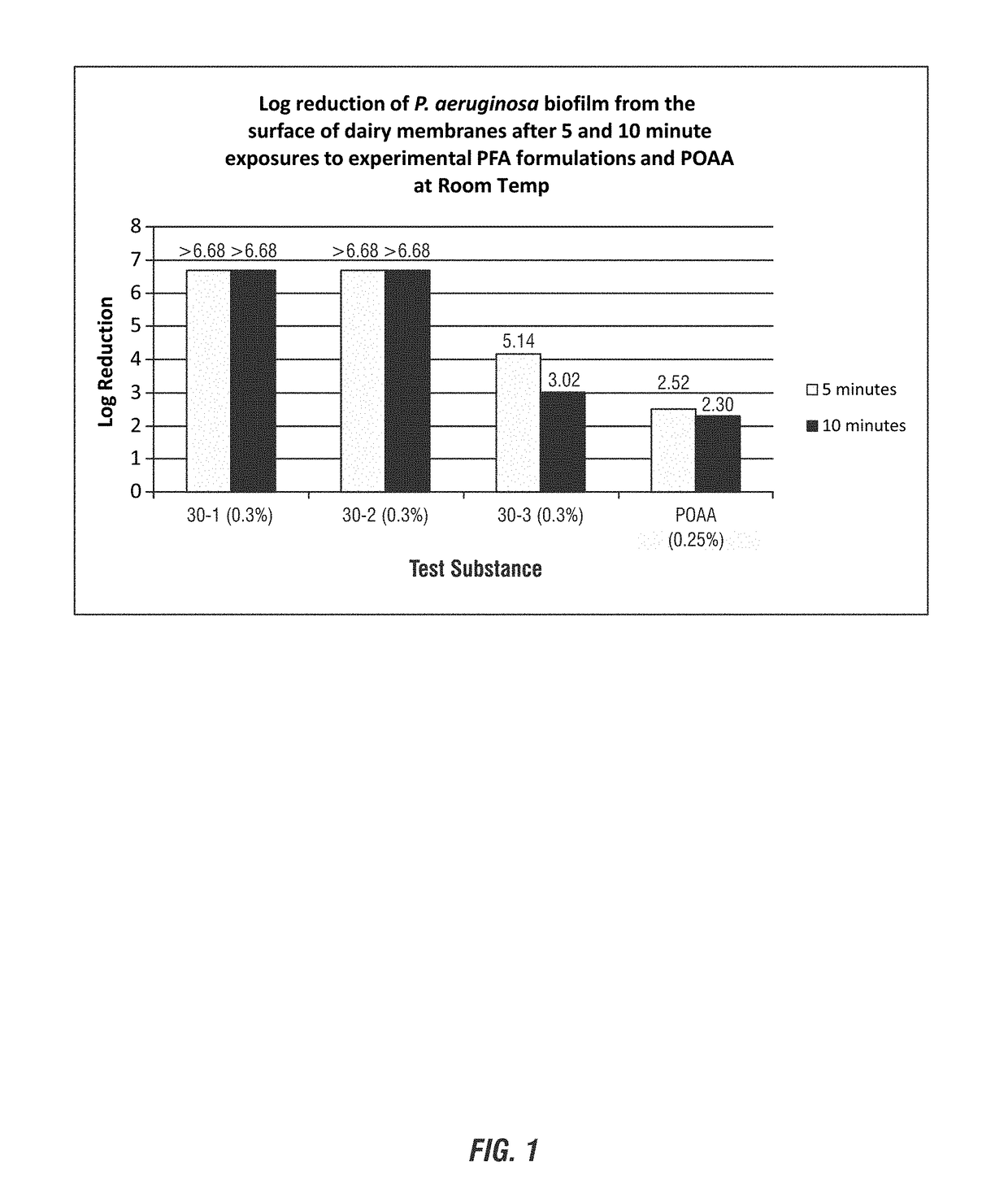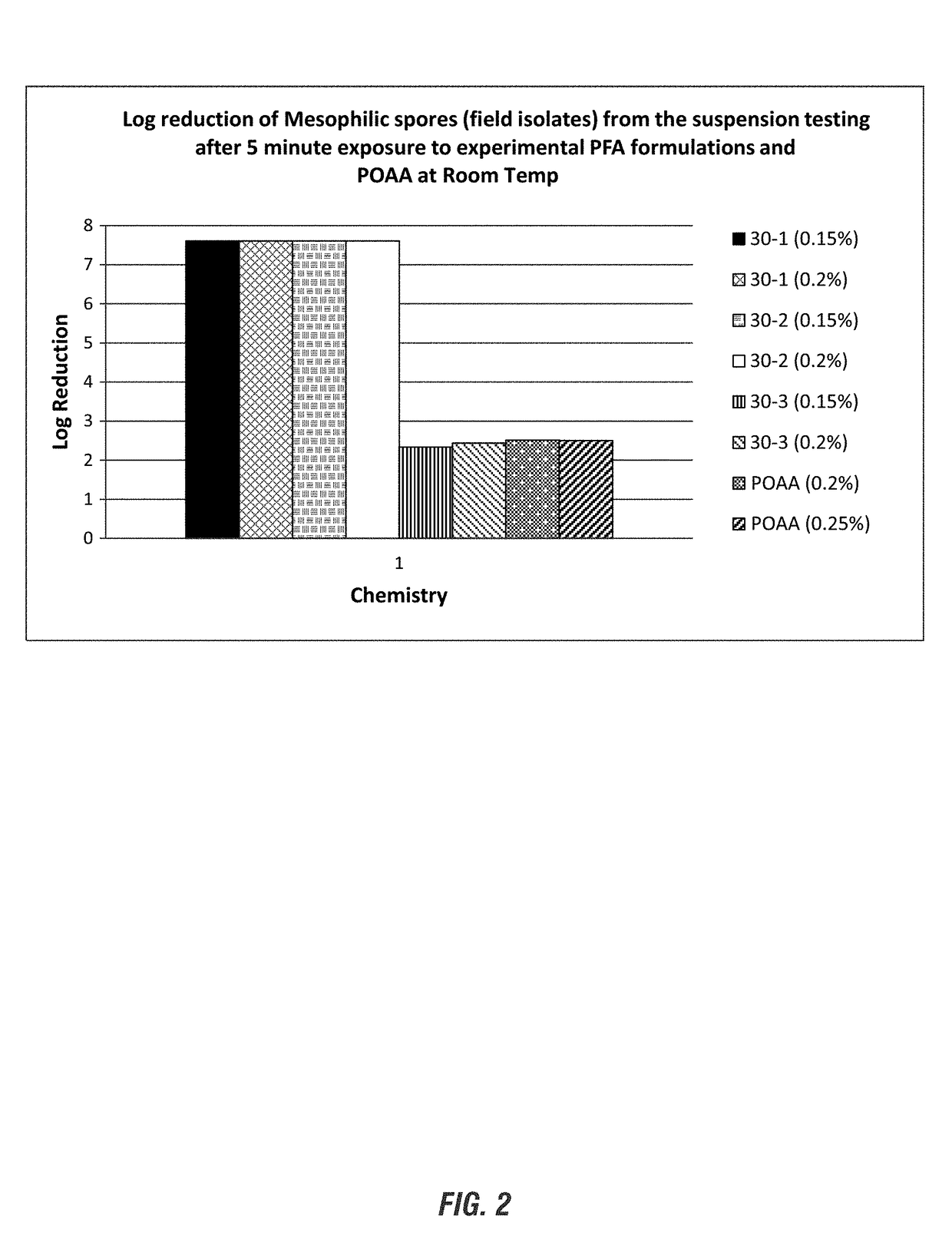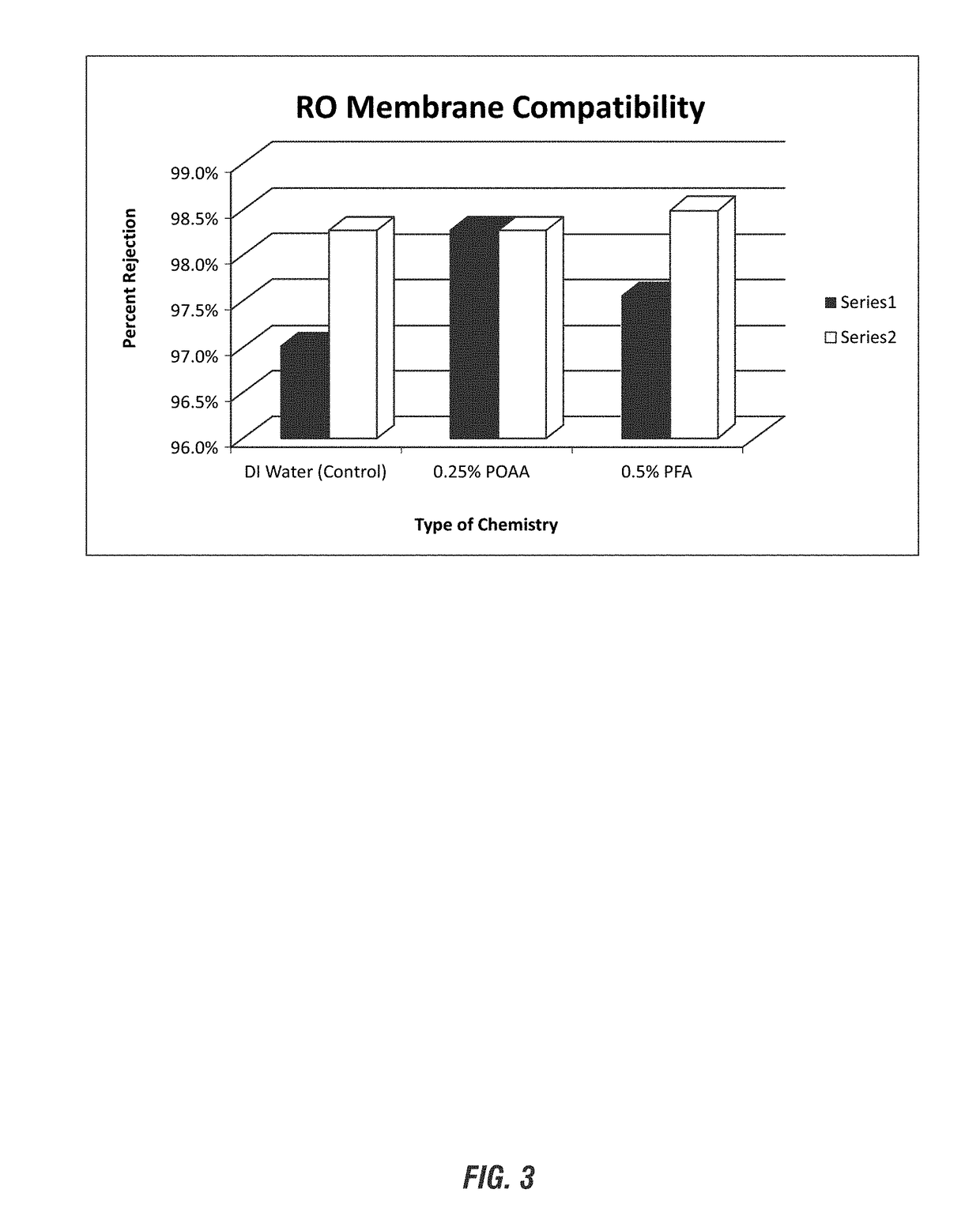Peroxyformic acid compositions for membrane filtration cleaning
a technology of peroxyformic acid compositions and membrane filtration, applied in the direction of filtration separation, cleaning using liquids, separation processes, etc., can solve the problems of biofilm growth and mineral deposits on membranes, membranes, ultrafiltration membranes, etc., to reduce biofilm growth and mineral deposits, kill and remove biofilms and other soils efficiently
- Summary
- Abstract
- Description
- Claims
- Application Information
AI Technical Summary
Benefits of technology
Problems solved by technology
Method used
Image
Examples
example 1
[0132]The removal of biofilm was tested to determine efficacy of biofilm removal and kill rates of Pseudomonas aeruginosa. Pseudomonas are well-known as common ‘pioneer’ bacteria and often tested for biofilm-inhibiting agents' effectivity. The bacteria are known to excrete polysaccharides and generate biofilm on a variety of surfaces very rapidly (including, for example, membrane filtration elements), as well as commonly demonstrate resistance to various antimicrobial compositions. However, bacteria that exist in a biofilm are phenotypically different from suspended cells of the same genotype; therefore the study of biofilm in the laboratory requires protocols that account for this difference. Laboratory biofilms are engineered in growth reactors designed to produce a specific biofilm type. Altering system parameters correspondingly results in a change in the biofilm.
[0133]Pseudomonas aeruginosa (ATCC 700888) was the organism used. An isolated colony was aseptically removed from an ...
example 2
[0138]Mesophilic bacterial endospores (also referred to as spores in this Example) present in raw milk are capable of surviving pasteurization and other adverse conditions encountered during dairy product production. Thus, the efficacy of mesophilic spore removal and kill rates were examined. The procedure outlined in Example 1 was followed replacing Pseudomonas aeruginosa with field isolates of mesophilic spores against varying concentrations of actives of the peroxyformic acid according to a lower active concentration (0.15% PFA composition 30-1 and 0.2% PFA composition 30-1) at a 5 minute exposure time and compared to peroxyacetic acid compositions (0.2% or 0.25% of peracetic acid compositions). The results of these experiments are shown in FIG. 2.
[0139]As illustrated in FIG. 2, both concentrations (0.15% and 0.2%) of formulas 30-1 and 30-2 were particularly effective in reducing mesophilic spores at a 5 minute exposure time at a lower actives concentration than what was evaluate...
example 3
[0140]In addition to biofilm disruption during membrane filtration, mineral scale also serves as a significant hindrance which reduces output and decreases the life of the membrane filtration elements. Mitigation of mineral buildup was tested to determine efficacy of the exemplary compositions to solubilize excess minerals.
[0141]For these experiments, compositions 30-1 (0.3%), 30-2 (0.3%), and 30-3 (0.3%) were prepared to be tested. Product dilutions were made in DI water and the initial pH of the solution was recorded. The test dilutions are then added to a beaker and stirred at 25° C. Excess amounts of calcium mineral (either phosphate or carbonate solids) were added until the solution was opaque and the amount of mineral added is recorded. The excess mineral is allowed to settle for about 5 minutes and a final pH of the acidic solutions are recorded. The solutions are then filtered and standard ICP-MS methods are used to determine calcium and phosphorus solubility capacity in the...
PUM
| Property | Measurement | Unit |
|---|---|---|
| temperature | aaaaa | aaaaa |
| temperature | aaaaa | aaaaa |
| diameters | aaaaa | aaaaa |
Abstract
Description
Claims
Application Information
 Login to View More
Login to View More - R&D
- Intellectual Property
- Life Sciences
- Materials
- Tech Scout
- Unparalleled Data Quality
- Higher Quality Content
- 60% Fewer Hallucinations
Browse by: Latest US Patents, China's latest patents, Technical Efficacy Thesaurus, Application Domain, Technology Topic, Popular Technical Reports.
© 2025 PatSnap. All rights reserved.Legal|Privacy policy|Modern Slavery Act Transparency Statement|Sitemap|About US| Contact US: help@patsnap.com



